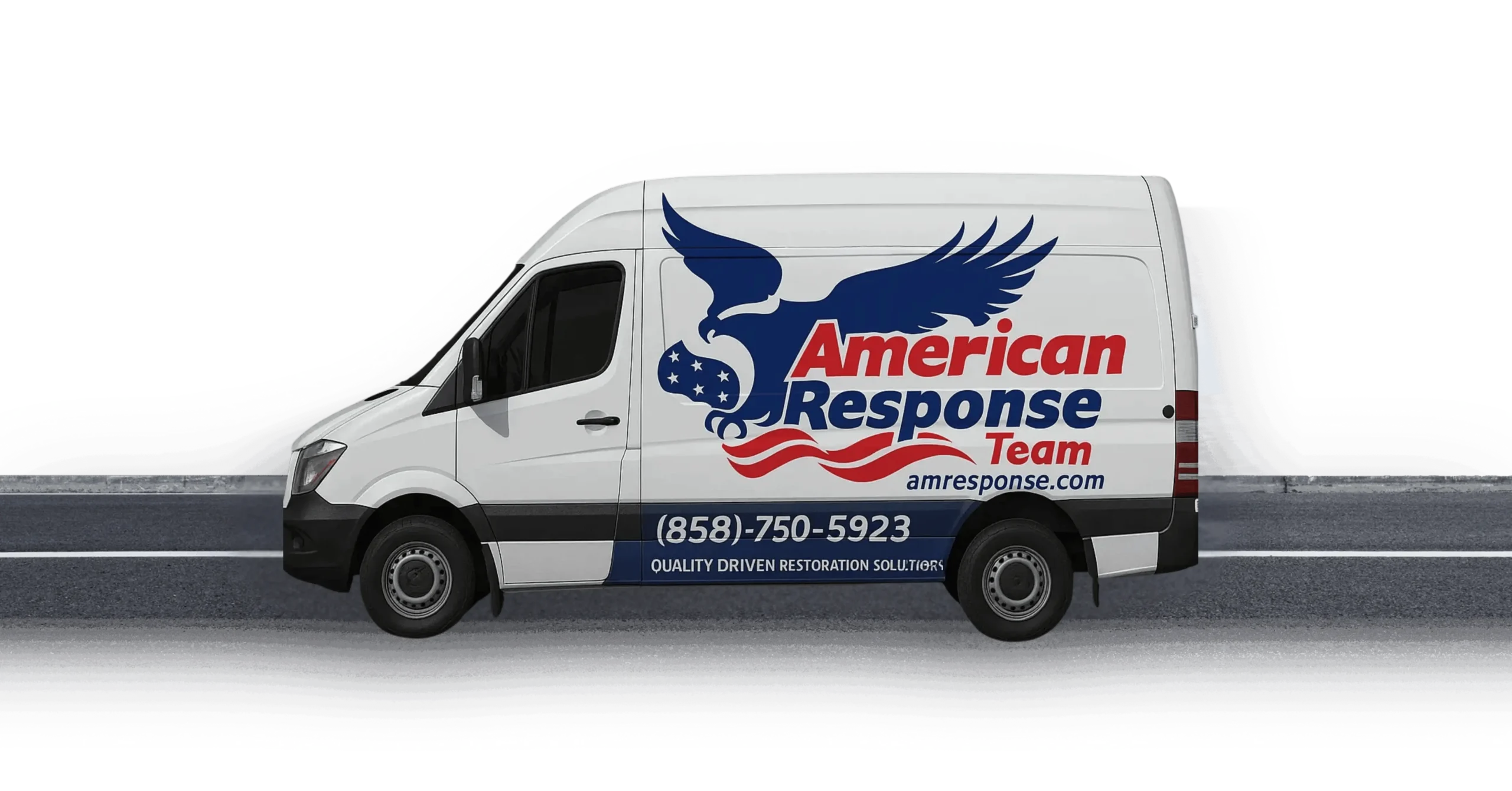Learning how to dispose of biohazard waste properly can protect you and your family from serious health risks. Every year, countless people face dangerous contaminated materials in their homes after accidents, medical emergencies, or crime scenes. This guide shows you exactly how to handle these scary situations safely.
Biohazard waste isn’t something most homeowners think about until they face it. But when blood, bodily fluids, or contaminated materials appear in your home, knowing how to dispose of biohazard waste becomes critical. Making mistakes with this dangerous material can put your health at serious risk.
What Makes Biohazard Waste So Dangerous?
When you’re dealing with how to dispose of biohazard waste, you need to understand what makes these materials so risky. According to the CDC, biohazard waste contains blood, bodily fluids, or other materials that could carry dangerous germs like HIV, hepatitis, and other serious diseases.
These contaminated materials don’t just smell bad or look gross. They can actually make you very sick if you touch them without protection. That’s why learning how to dispose of biohazard waste correctly is so important for every homeowner in San Diego County.
Step 1: Stop and Stay Safe First
Before you even think about how to dispose of biohazard waste, you need to protect yourself. Never touch contaminated materials with your bare hands. Blood and other bodily fluids can carry germs that stay dangerous for days or even weeks.
Put on protective gear before you get close to the contaminated area. You need rubber gloves, protective eyewear, and clothes that cover your whole body. If you don’t have the right safety equipment, don’t try to clean up biohazard waste yourself.
Many homeowners make the mistake of thinking they can handle different types of biohazard waste with just regular cleaning supplies. This thinking can lead to serious illness or infection.
Step 2: Understand Federal Safety Rules
Learning how to dispose of biohazard waste means understanding the laws that keep everyone safe. OSHA’s bloodborne pathogen standards require specific steps for handling contaminated materials.
These rules exist because improper disposal of biohazard waste has caused serious problems in the past. Workers have gotten sick from contaminated materials that weren’t handled correctly. The government created these safety rules to prevent more injuries and illnesses.
When you know how to dispose of biohazard waste according to federal guidelines, you protect yourself and your community. These standards apply to everyone who handles contaminated materials, not just medical professionals.
Step 3: Use the Right Containers and Labels
Proper containers are a crucial part of how to dispose of biohazard waste safely. You can’t just throw contaminated materials in regular trash bags. EPA regulations require special containers that won’t leak or break.
Red biohazard bags are designed specifically for contaminated waste. These thick, puncture-resistant bags prevent dangerous materials from leaking out during transport. Regular plastic bags can tear easily and spread contamination.
Every container must have the universal biohazard symbol clearly visible. This warning label tells everyone who sees the container that it contains dangerous materials. Learning how to dispose of biohazard waste includes knowing how to label everything correctly.
Sharp objects like broken glass or needles need special puncture-proof containers. Never put sharp contaminated items in regular bags, even biohazard bags. These containers prevent accidental cuts that could spread infection.
Step 4: Clean and Disinfect Everything
When you’re dealing with how to dispose of biohazard waste, cleaning the contaminated area properly is just as important as disposal. Regular household cleaners won’t kill dangerous germs that might be present in blood and bodily fluids.
You need hospital-grade disinfectants that can destroy bloodborne pathogens. These powerful cleaners are specifically designed to kill germs like HIV and hepatitis that can survive on surfaces for long periods.
Start by removing all visible contaminated materials first. Then apply the disinfectant and let it sit for the amount of time listed on the product label. This contact time is necessary to kill all the dangerous germs.
Don’t forget to clean and disinfect any tools or equipment you used during cleanup. Everything that touched contaminated materials needs to be properly treated before you can safely use it again.
Step 5: Handle Transportation Carefully
Moving biohazard waste safely is a critical part of how to dispose of biohazard waste correctly. These materials can’t be transported like regular garbage. They need special handling to prevent spills or exposure during transport.
Double-bag all contaminated materials to prevent leaks. Place the first biohazard bag inside a second bag for extra protection. Seal both bags tightly to prevent any materials from escaping.
Never overfill containers or bags. Overstuffed containers are more likely to break open during handling. Leave enough space to seal everything properly without forcing materials to fit.
Keep contaminated materials away from people, pets, and food during transport. Store them in a secure area where children and animals can’t accidentally get into them.
Step 6: Find Approved Disposal Facilities
Knowing how to dispose of biohazard waste includes finding the right disposal location. You can’t just throw these materials in your regular garbage. Most landfills and waste treatment plants won’t accept contaminated materials without proper treatment.
Licensed medical waste disposal companies have special facilities designed to handle biohazard materials safely. These companies use high-temperature incineration or specialized sterilization processes to destroy dangerous germs completely.
Some hospitals and urgent care centers accept small amounts of biohazard waste from homeowners. Call ahead to ask about their policies and any fees they might charge for disposal services.
Never try to dispose of biohazard waste in regular trash, down drains, or by burning it yourself. These methods don’t destroy dangerous germs and can actually spread contamination to more areas.
Step 7: Document Everything for Safety
The final step in how to dispose of biohazard waste is keeping records of what you’ve done. Documentation protects you if questions come up later about how the contamination was handled.
Take photos before cleanup begins to show the extent of contamination. Keep receipts from disposal companies and cleaning supplies you purchased. Write down what cleaning products you used and when you used them.
This paperwork might seem unnecessary, but it can be important for insurance claims or legal issues. Some insurance companies require proof that professional biohazard cleanup services were used for contamination incidents.
When You Need Professional Help
Sometimes learning how to dispose of biohazard waste on your own isn’t enough. Large contamination areas, multiple rooms, or certain types of dangerous materials require professional cleanup services.
Professional cleanup teams have specialized equipment that most homeowners don’t have access to. They use industrial-grade disinfectants, air filtration systems, and protective gear designed for the most dangerous cleanup situations.
These experts also understand all the legal requirements for how to dispose of biohazard waste in different situations. They handle all the paperwork and ensure everything meets federal and state regulations.
Crime scenes, suicide cleanup, unattended deaths, and large blood spills should always be handled by professionals. These situations involve complex contamination patterns that require specialized trauma cleanup knowledge to address safely.
Common Mistakes That Create Danger
Many people make serious errors when they try to figure out how to dispose of biohazard waste without proper guidance. Using regular cleaning supplies instead of medical-grade disinfectants is one of the most dangerous mistakes.
Another common error is not wearing proper protective equipment during cleanup. Some homeowners think rubber dishwashing gloves are enough protection, but they often have tiny holes that let germs through.
Trying to save money by disposing of contaminated materials in regular trash puts garbage workers and the community at risk. This mistake can also result in legal problems and fines from environmental agencies.
Not disinfecting hidden areas where contamination might have spread is another frequent problem. Blood and other fluids can soak into porous materials like wood and carpet, creating ongoing health risks if not properly treated.
Health Risks You Need to Know About
Understanding how to dispose of biohazard waste correctly becomes more important when you realize what diseases these materials can carry. Hepatitis B can survive on surfaces for up to a week, even in dried blood.
HIV, while more fragile than other viruses, can still pose risks during cleanup if proper precautions aren’t followed. Other dangerous germs like MRSA and C. difficile can also be present in contaminated materials.
The health risks aren’t limited to the person doing the cleanup. Family members, especially children and elderly people, are also at risk if contaminated areas aren’t properly cleaned and disinfected.
Some diseases can cause lifelong health problems or even death. This is why learning how to dispose of biohazard waste safely is so critical for protecting everyone in your home.
Insurance and Legal Considerations
When dealing with how to dispose of biohazard waste, insurance coverage can be complicated. Many homeowners don’t realize what their policies do and don’t cover for contamination cleanup.
Some insurance companies require professional cleanup for biohazard situations. Trying to handle it yourself might void your coverage and leave you responsible for all costs.
Legal liability is another important consideration. If contaminated materials from your property cause illness to others, you could face serious legal consequences and financial responsibility.
Working with licensed professionals who understand cleanup regulations and laws protects you from these potential problems.
Prevention and Preparation
While you can’t prevent every situation that creates biohazard waste, you can prepare for them. Keep basic protective equipment in your home emergency kit, including rubber gloves, face masks, and eye protection.
Know the contact information for professional cleanup services in your area before you need them. Emergency situations aren’t the best time to research how to dispose of biohazard waste or find qualified help.
Understanding your insurance coverage ahead of time helps you make better decisions during stressful emergency situations. Review your policy or call your agent to understand what biohazard cleanup coverage you have.
Consider the safety of elderly family members or people with compromised immune systems who might be at higher risk from contamination exposure.
Getting Professional Help in San Diego County
San Diego County residents dealing with biohazard contamination don’t have to handle dangerous cleanup alone. Professional restoration companies understand exactly how to dispose of biohazard waste according to all federal, state, and local regulations.
These experts have the training, equipment, and experience to handle even the most challenging contamination situations safely. They also work with insurance companies to help homeowners get the coverage they’re entitled to receive.
From Vista to La Jolla, homeowners can get professional biohazard cleanup help 24 hours a day. Emergency response teams understand that contamination situations can’t wait for business hours.
Professional cleanup services also provide the documentation and certifications that insurance companies and legal authorities might require. This paperwork proves that the contamination was handled correctly and completely.
Take Action to Protect Your Family
Now that you know how to dispose of biohazard waste safely, you can protect your family from dangerous contamination risks. Remember that this isn’t a situation where you should try to save money by cutting corners on safety.
When in doubt, always choose professional help over trying to handle dangerous materials yourself. The health and safety of your family is worth more than the cost of proper cleanup services.
Keep this information handy so you’ll know what to do if you ever face a biohazard contamination emergency. Quick action and proper procedures can prevent small problems from becoming major health risks.
If you’re dealing with biohazard contamination in San Diego County right now, don’t wait to get professional help. Contact experienced cleanup specialists who know exactly how to dispose of biohazard waste safely and legally.

